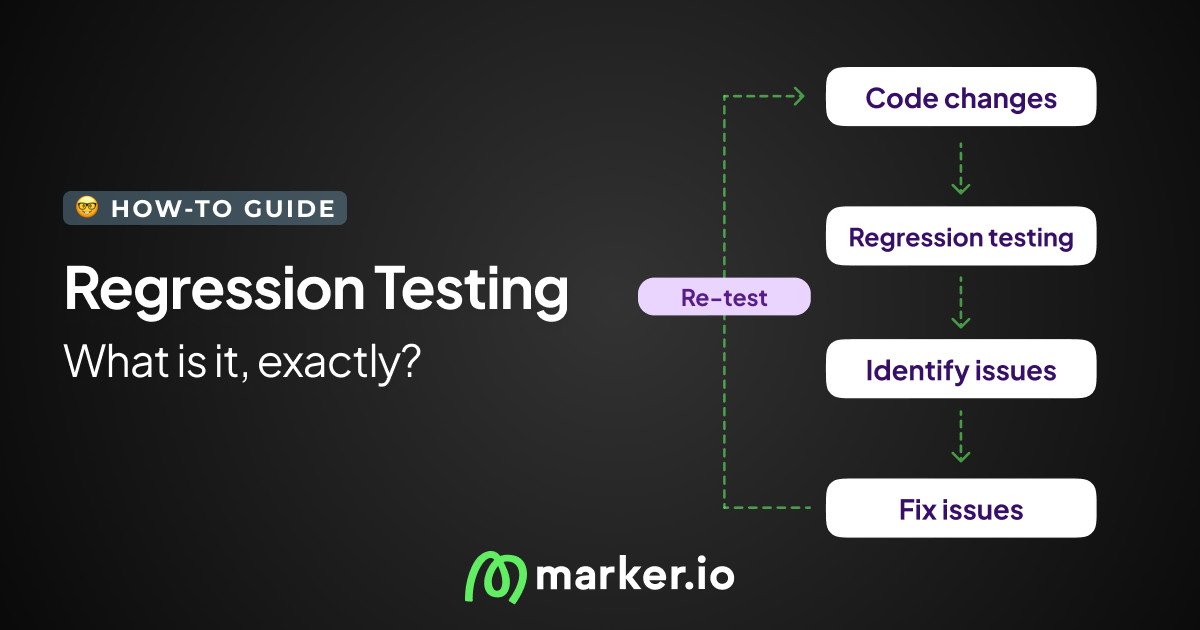Are bugs in your code slowing you down? You know how frustrating it can be to track down errors and fix them quickly.
What if there was an easier way to manage bugs without losing precious time? This article will show you simple, effective bug tracking methods that fit right into your workflow. By the end, you’ll have clear strategies to catch issues faster and keep your projects running smoothly.
Ready to make bug tracking hassle-free? Let’s dive in.

Credit: project-management.com
Choosing The Right Bug Tracking Tool
Choosing the right bug tracking tool is key for developers. It helps keep projects organized and fixes bugs faster. A good tool fits your team’s needs and workflow. It should be easy to use and support clear communication. Picking the right one saves time and reduces errors.
Popular Tools For Developers
Many bug tracking tools exist for developers. Jira is popular for big teams. It offers many features and customization. Trello is simpler, with visual boards for tasks. Bugzilla is open-source and free. GitHub Issues works well for projects on GitHub. Each tool suits different project sizes and styles.
Features To Look For
Choose tools with clear issue tracking. It should allow easy bug reporting and updating. Look for priority and status labels. Good tools support attachments and comments. Notifications keep everyone updated on changes. Search and filter options help find bugs quickly. Simple interfaces reduce learning time.
Integrations With Development Environments
Bug trackers that connect with coding tools save time. Integration with IDEs helps report bugs without switching apps. Linking with version control shows bug history in code. Continuous integration tools can run tests and report errors automatically. Choose tools that fit your existing workflow for smooth work.

Credit: marker.io
Simple Bug Reporting Techniques
Simple bug reporting techniques help developers fix issues faster. Clear reports save time and reduce confusion. They improve communication between testers and developers. This section covers easy ways to report bugs effectively.
Effective Bug Descriptions
Write clear and short bug descriptions. Describe what happened and what you expected. Avoid technical words unless necessary. Use simple sentences to explain the problem. Mention steps to repeat the bug. This helps developers understand and fix bugs quickly.
Using Screenshots And Logs
Screenshots show the exact problem visually. They help developers see what you see. Attach error logs or console messages too. Logs give details about the bug’s cause. Together, screenshots and logs make bugs easier to solve.
Prioritizing Bugs Correctly
Not all bugs need the same attention. Mark bugs as high, medium, or low priority. Focus first on bugs that stop the app from working. Medium priority bugs affect user experience. Low priority bugs are minor or cosmetic issues. Correct prioritization guides developers to fix the most important problems first.
Organizing Bugs Efficiently
Efficient bug organization is key for smooth software development. It helps developers track, manage, and fix bugs faster. Without proper organization, bugs can get lost or ignored. This leads to delays and frustration.
Good bug organization saves time and improves teamwork. It keeps the project on track and boosts product quality. Clear methods help teams handle many bugs without chaos.
Categorizing And Tagging Bugs
Start by sorting bugs into clear categories. Use tags like “UI”, “performance”, or “security”. This grouping helps find bugs faster. It also shows which areas need more work.
Tags make filtering bugs easy. Developers focus on one type at a time. This method cuts confusion and speeds up fixing.
Setting Milestones And Deadlines
Assign deadlines for bug fixes. Set milestones to track progress. This keeps the team focused on goals.
Deadlines help prioritize urgent bugs. Milestones show how many bugs are fixed. This motivates the team to meet targets.
Assigning Bugs To Team Members
Give each bug to a specific developer. Clear ownership prevents tasks from falling behind. It also improves responsibility and accountability.
Assign bugs based on skills and workload. Balanced assignments keep the team productive. Everyone knows exactly what to work on next.
Automating Bug Tracking Processes
Automating bug tracking processes saves time and reduces errors. It helps developers focus more on fixing issues than managing them. Automation keeps the bug tracking system organized and up-to-date. It sends alerts, sorts bugs, and fits into the development workflow smoothly.
Using Automated Alerts And Notifications
Automated alerts notify developers about new bugs instantly. These alerts can come through emails, chats, or project management tools. Quick notifications ensure that bugs get attention fast. Developers avoid delays and can start fixing problems sooner. This keeps the project moving without unnecessary hold-ups.
Integrating With Continuous Integration Systems
Continuous Integration (CI) systems test code automatically. Integrating bug tracking with CI links test results to bug reports. Developers see errors as soon as they happen. This integration helps catch bugs early in the development cycle. It reduces the chance of bugs reaching production.
Automated Bug Triage
Automated bug triage sorts and prioritizes bugs without manual work. It uses rules to assign bugs to the right team or developer. This speeds up the handling of new issues. Developers spend less time deciding what to fix first. The bug fixing process becomes more efficient and organized.
Improving Team Collaboration
Improving team collaboration is essential for effective bug tracking. It helps developers share information quickly and solve problems faster. A strong team connection reduces misunderstandings and speeds up project progress.
Clear communication and regular check-ins keep everyone on the same page. Sharing knowledge openly builds trust and boosts team morale. These habits create a smoother workflow and better software quality.
Communication Best Practices
Use simple language in all discussions. Avoid technical jargon unless everyone understands it. Share updates often to keep the team informed. Use tools like chat apps and email for quick messages. Listen carefully to teammates’ ideas and concerns. Confirm understanding by asking short questions.
Regular Bug Review Meetings
Schedule short meetings to discuss current bugs. Focus on the most important or urgent issues first. Let each team member explain their progress and challenges. Take notes and assign clear tasks. Keep meetings brief to respect everyone’s time. Use video calls or face-to-face talks for better clarity.
Sharing Knowledge And Solutions
Create a central place to store bug details and fixes. Encourage team members to write clear steps for solutions. Share helpful tips and lessons learned after solving bugs. Use wikis, shared documents, or project management tools. Recognize contributions to motivate knowledge sharing. This practice prevents repeated mistakes and saves time.
Measuring Bug Tracking Success
Measuring bug tracking success helps developers improve their work. It shows how well bugs are found and fixed. Tracking progress makes the whole process clearer. It also helps teams solve problems faster. Accurate measurement leads to better software quality and happier users.
Key Performance Metrics
Key metrics reveal how well bug tracking works. Common ones include the number of bugs found, bugs fixed, and bugs reopened. Tracking these metrics helps spot weak areas in the process. It also shows the team’s overall performance. Clear metrics guide better decision-making and priorities.
Tracking Resolution Time
Resolution time measures how fast bugs get fixed. Shorter times mean quicker problem solving. Tracking this helps find delays in the workflow. It also helps assign tasks to the right team members. Keeping resolution times low improves user satisfaction and product quality.
Analyzing Bug Trends
Bug trends show patterns in bug reports over time. Trends can reveal recurring issues or new problem areas. Analyzing trends helps prevent future bugs. It guides testing and development efforts. Understanding trends keeps the software stable and reliable.

Credit: marker.io
Frequently Asked Questions
What Are The Best Easy Bug Tracking Tools For Developers?
Easy bug tracking tools like Jira, Trello, and Bugzilla help developers manage issues efficiently. They offer simple interfaces, customizable workflows, and real-time collaboration. Choosing the right tool depends on project size and team needs. These tools improve productivity and reduce bug resolution time.
How Can Developers Track Bugs Without Complex Software?
Developers can track bugs using spreadsheets or simple task boards. These methods are easy to set up and require minimal learning. They work well for small projects or teams. Regular updates and clear documentation ensure bugs are managed effectively without complex tools.
Why Is Bug Tracking Important For Software Development?
Bug tracking ensures issues are identified, documented, and resolved promptly. It improves software quality and user satisfaction. Tracking helps prioritize fixes and prevents bugs from being overlooked. It also provides valuable insights for future development and testing.
How Does Bug Tracking Improve Developer Productivity?
Bug tracking organizes issues clearly, reducing confusion and duplicated work. It streamlines communication among team members and stakeholders. Developers spend less time searching for bugs and more time fixing them. This leads to faster releases and higher software quality.
Conclusion
Bug tracking helps developers find and fix problems fast. Using simple methods saves time and reduces errors. Clear steps make teamwork easier and projects smoother. Choose tools that fit your needs and skills. Keep tracking bugs regularly to avoid bigger issues later.
Good bug tracking keeps software reliable and users happy. Try these easy methods and see the difference yourself.
